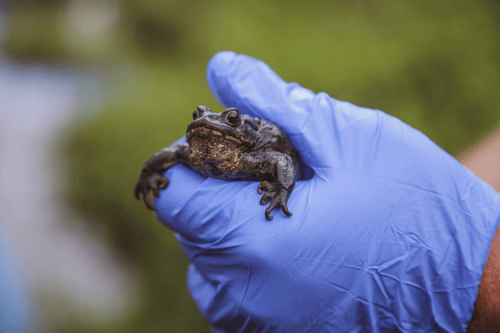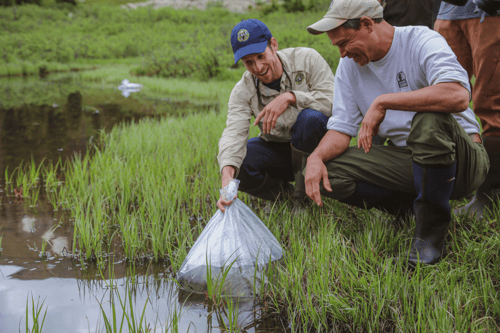When the topic of wildlife conservation and management is discussed, it is often the large and charismatic animals that attract the most attention. But many of our smaller mountain residents have similar conservation stories and efforts in place to help them continue to survive in the mountains. One of our few high country amphibians, the boreal toad, is a great example of conservation efforts in action to help preserve a true mountain specialist species.

Boreal Toad Close-Up From The Denver Zoo
These cold blooded critters have been in decline for the last several decades and by 1989, they were absent from 89% of their historical breeding range in the state of Colorado. The boreal toad is currently listed as an endangered species by the states of Colorado and New Mexico and is a protected species in Wyoming. This severe decline is a result of several interconnected issues including habitat loss, climate change and, perhaps most importantly, an infectious chytrid fungus (Batrachochytrium dendrobatidis). This fungus infects the skin of the toad, making it difficult for them to absorb water and nutrients. As a result, infected toads become weak and are more susceptible to other diseases and predators. To help protect these high elevation amphibians there are several conservation strategies at work

Denver Zoo Release Endangered Toads
One strategy that's been successful in other amphibian species and is being used to bolster the boreal toad is captive breeding. Essentially, scientists breed toads in captivity and then release them into the wild in areas where they are struggling. This helps boost the population and can help increase genetic diversity, which is important for long-term survival. Habitat restoration is another important conservation strategy. Boreal toads need specific types of habitat to survive, including clean water and plenty of places to hide and nest. Unfortunately, many of their natural habitats have been disrupted by human activities like resource extraction and other development. Restoration efforts can help create more suitable habitat and give the toads a better chance of survival. In Colorado, the Colorado Parks and Wildlife department has been working on restoration projects in areas where boreal toads live.
Finally, researchers are working hard to better understand the impacts of the chytrid fungus on boreal toads. By monitoring the spread of the fungus and studying its effects on toad populations, scientists can develop better strategies for protecting the toads in the future. For example, they might be able to identify areas where the toads are more likely to survive and focus conservation efforts there. These combined strategies have led to some marked improvements for populations but the boreal toad is not out of the woods quite yet.
As we look ahead, you can continue to help the boreal toad by preventing the spread of chytrid fungus. Thoroughly clean your gear before and after use, especially when moving between different bodies of water or drainages. As with all wildlife, leave it alone and do not necessarily come into contact with boreal toads. The boreal toad is no stranger to surviving in the rugged mountains and with conservation efforts at work, these cold blooded survivors stand a much better chance of long term survival.
Scott Dunn is the Community Programs Manager at Walking Mountains Science Center and grew up wrangling bullfrogs and chasing spring peepers but has grown up to appreciate amphibians like boreal toads from afar.







